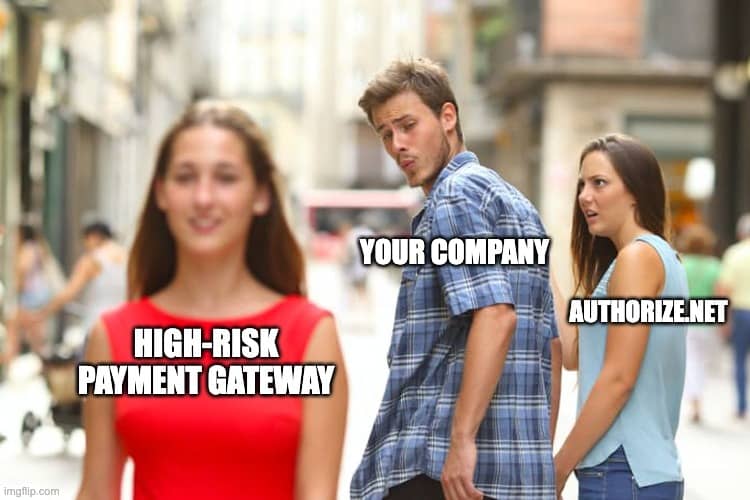What Are Interchange Fees?

Whether you’re a small business owner, an eCommerce company, or a consumer, you’re charged a fee for each transaction you make with a credit card. The card issuer, card networks, payment processors, and even the merchant’s bank charge cardholders these fees on every transaction they make. Even though all these entities charge their own fee, the charges usually show up as a single amount on the bill the cardholder receives from their payment processor. In this post, we’ll dive into the questions, “what are interchange fees?” and “how much are interchange fees?”
What Are Interchange Fees?
An interchange rate or fee is the fee merchants must pay with each credit and debit card transaction.
The card-issuing banks set these rates in exchange for accepting the risk associated with taking different payment forms.
Similar to interest rates, interchange rates, which fluctuate depending on the network being used, are periodically revised. Interchange fees are generally a percentage of the total transaction amount. But, they can also be charged as a flat fee.
The type of transaction also plays a role in determining the rate charged. The interchange rate for a purchase made at a grocery store or gas station is lower than a CBD purchase.
How Much Are Interchange Fees?
As we mentioned, many factors determine the interchange fee and rate. Credit card companies often roll interchange fees into a single flat rate plus a percentage of the sales total to simplify the cost for merchants. The average interchange rate for most purchases in the United States is 2% of the purchase amount. According to the Federal Reserve, that was about 23 cents per transaction in 2020.
The average interchange rates for the most popular card issuers are:
- Visa: 1.30-2.60%
- Mastercard: 1.45-2.90%
- Discover: 1.55-2.45%
- American Express: 1.80-3.25%
What Transactional Factors Impact Interchange Fees?
The primary transactional factors that impact interchange fees are:
- Type of transaction: Merchants consider certain transactions riskier than others. This largely depends on the type of business the cardholder is transacting with. Point-of-sale or POS transactions are less risky than card-not-present, or CNP transactions. This is because the merchant can scan the cardholder’s chip, sign for their purchase, or enter their PIN — or all three! CNP transactions, like online and telephone orders, are charged higher interchange rates because there are fewer ways to authenticate the purchases.
- Type of business and industry: Interchange rates also vary by type of business. For example, larger merchants, such as Walmart, often have lower rates than a small-town grocery store. This is because of its reputation for successfully negotiating with banks and credit card companies.
- Type of card: Debit cards that require the cardholder to enter their PIN number have lower interchange rates than credit cards that don’t need anything but a signature. This is because they are considered lower risk due to the extra authentication step the PIN number brings. Each credit card company charges a different rate for its different types of cards. Visa charges 1.51% + 10¢ for purchases made with its basic credit card but charges 2.70% + 10¢ for CNP transactions made with its business credit card. Mastercard charges 1.58% + 10¢ for purchases made with its basic credit card, and the rate increases to 2.70% + 10¢ for CNP transactions made with its corporate card. Reward cards can pay for the perks they dole out to their cardholders by charging higher interchange rates to merchants.
- Time and day of the week: Some cards even have different interchange rates for transactions on weekends or at night.
- Merchant location: Some interchange rates fluctuate depending on the business location. For example, businesses located in Canada accepting purchases from Americans may face additional processing fees that are not included in the standard interchange rates.
- Card owner: Whether the card owner is an individual, business, or government agency can also impact their interchange rate. This is primarily based on their ability — or perceived ability — to pay back the purchase cost. Purchases made by government agencies or businesses are considered less high-risk than those made by John Doe. Therefore, they have the lowest interchange fees.
How Can I Calculate Credit Card Interchange Fees?
Calculating interchange fees and rates can be tricky. But there are a few ways to do it, including:
- Looking at the details of your merchant agreement.
- Calculating your effective rate — divide your fees by your processing volume for one month.
What is The Durbin Amendment?
The Durbin Amendment mandates the Federal Reserve to limit fees charged to merchants for debit card processing. Passed in 2010, the amendment aims to limit interchange fees and “debit card swipe fees” paid to banks when cards are swiped for purchases. Before the Durbin Amendment went into effect, there was no regulation around swipe fees, and they averaged about 44 cents per transaction.
The Durbin Amendment was viewed as a significant loss for banks, which received billions of dollars annually from swipe fees. The law requires banks with more than $10 billion in assets to charge “reasonable and proportional” debit card interchange fees.
The act also allowed the Federal Reserve to regulate debit card interchange fees. In 2010, they set the maximum interchange fee at 12 cents per debit card transaction. In 2011, the final rule was issued at 21 cents plus five basis points for interchange fees for a single debit card transaction.
How Are Businesses Charged Interchange Fees?
When a customer uses their card to pay for a purchase, the merchant is charged an interchange fee — whether their transaction is card-present or card-not-present. The interchange fee is generally around 1-2% of the transaction amount, and there are various ways the fees can be charged, including:
- A tiered-fee structure: A tiered-fee structure is just as it sounds — a tier of fees that vary based on the type of transaction. The cost of accepting different card types varies. So, to simplify pricing, merchants often lump several card types into three tiers — for example, rewards cards, standard cards, and debit cards — and each type of card has its own interchange fees.
- A flat-fee structure: Most businesses pay a flat-rate interchange fee. PayPal, Stripe, and Square charge businesses a 2.95% flat fee, no matter what type of card the customer swipes. But, they can also charge an additional fee for swiping. For example, Stripe charges an additional 30 cents for each successful card swipe.
- Surcharging: Surcharging is a tactic many small businesses have used to save money on interchange fees. Surcharging is when a merchant transfers all credit card processing fees to its customers, which generally results in surcharging between 3-5% on top of all transactions, offering a discount to those consumers who pay in cash. You may have seen a sign at your local nail salon or family-owned restaurant that says “all credit card users will be charged an additional 3%” — that’s an example of surcharging card users. Although this sounds good in practice, some states don’t allow surcharging, and some customers may feel slighted by having to pay additional fees to frequent your business, sending them into the arms of your competitors.
- Interchange-Plus: This structure occurs when the merchant service provider charges an additional percentage on top of the interchange cost to make a profit. This is often illustrated at businesses that charge an extra percentage when someone pays with a specific type of card, such as a Visa debit card.
- Membership pricing: Membership pricing is comparable to interchange-plus pricing because it separates the processor’s markup from the interchange. But, merchants are charged a single monthly membership fee in membership pricing models rather than multiple separate account fees.
Can Interchange Fees Be Negotiated?
Most merchants are not given the option of negotiating interchange rates as the card issuer determines them. However, some large corporations may be able to negotiate rates with payment processors because of the high volume of transactions they execute daily.
Do Debit Cards Charge Interchange Fees?
Yes. All transactions are charged interchange fees, including debit card transactions. However, debit card interchange fees are generally lower than credit card interchange fees due to a lower risk.
What is an Interchange Reimbursement Fee?
Interchange reimbursement fees, also known as transfer fees, are agreed-upon charges between the card issuer and payment processor.
How Are Interchange Fees Changing in 2022?
Visa and Mastercard generally update their interchange rates twice a year — April and October. However, during the COVID-19 pandemic, both card issuers postponed making changes to their fee schedules. In fact, they recently updated their fee schedules in April for the first time in two years.
The new fee schedules were met with a lot of contempt. This was due to their significant increases, especially for card-not-present transactions, which were implemented due to a tremendous rise in online fraud during COVID-19, as eCommerce skyrocketed in popularity.
As businesses and consumers grapple with the effects of record inflation, they are unhappy with the interchange fee increases imposed by Visa and Mastercard.
But, there is a silver lining for merchants looking to avoid the most significant rate increases. They can do so by securing their accounts with tokenization and encouraging their customers to use digital wallets.
It’s important to note that tokenization requires a payment gateway, whether the transaction takes place online or through a point-of-sale system.
The primary changes Visa and Mastercard included in their updated interchange fee schedules include:
- A significant increase in interchange rates for eCommerce (CNP transactions) without tokenization.
- A slight decrease in some interchange rates for retail, such as card-present transactions.
- A slight reduction or no change to interchange rates for eCommerce transactions that include tokenization.
Zenti Can Help
If you’re a high-risk business looking to decrease your interchange fees and rates, we can help. As experts in handling high-risk merchant payment processing for various high-risk industries, where low-risk providers turn their back, we welcome you with open arms. We’re always ready to help high-risk businesses get approved and stay approved. Contact Zenti today to learn more.
Read Next

Find out whether Authorize.Net works for high risk merchants, what restrictions you might face and how to get approved.

Get expert advice on selling CBD products on Shopify, including compliance tips and setting up secure payment options.

Find out why Square may deactivate merchant accounts and steps to resolve issues and maintain uninterrupted payment services.
Need a High-Risk Merchant Account?
Disruption-free payment processing at the best price for your situation, guaranteed.
Get Free Guidance Now!